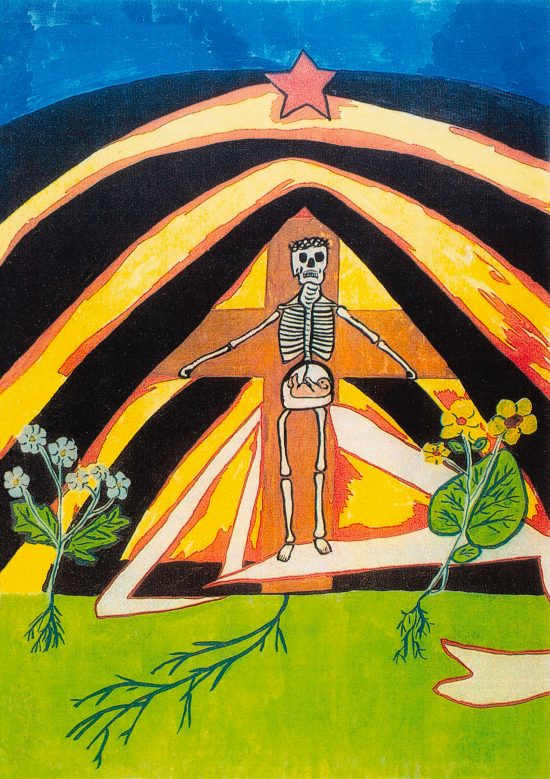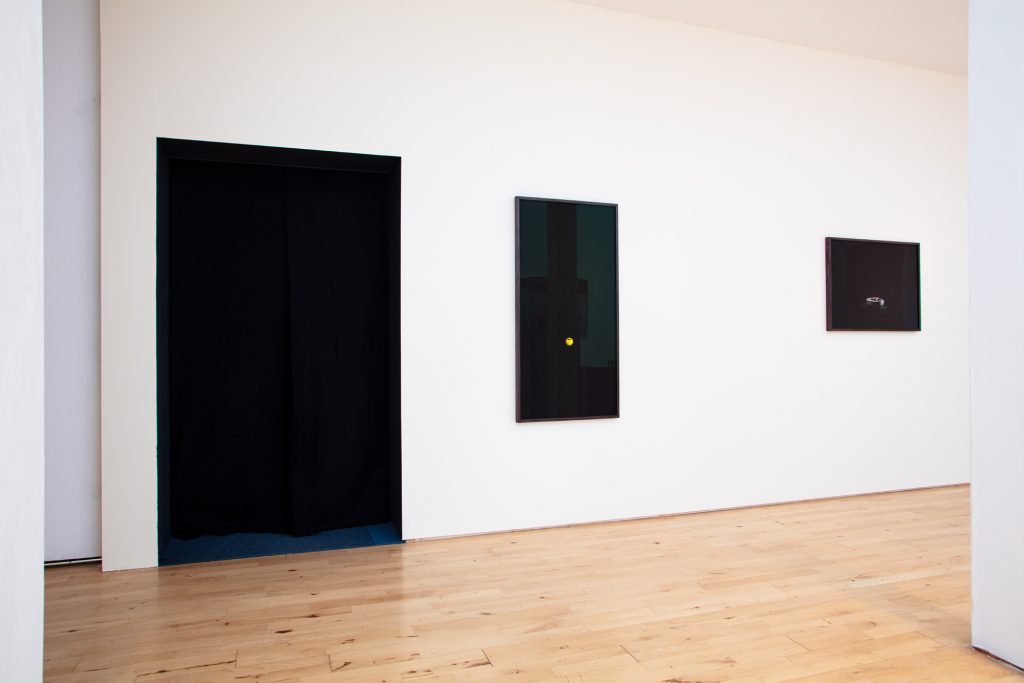Online Salon: Speculative Conversations Erika Tan in conversation with Kathleen Ditzig & Wendy Teo
Saturday 9 July | 1-3pm
Online Premiere: Erika Tan Barang Barang: Spectral Entanglements (2022) 2-channel video 23 mins. Online 9-16 July 2022
Barang-Barang is a multi-faceted installation containing collected objects, materials and moving-image works produced over the course of Erika Tan’s Stanley Picker Fellowship. The project explores the value and relevance given to the material traces and afterlives of objects made, collected, discarded or valued by others, responding to local specificities, personal collections and historical connections that the artist encountered, from coconut coir mills in Kingston upon Thames to the speculative entanglements that she weaves between different events, places and people, including that of her mother Fay Tan.
Barang-Barang is a Malay word used colloquially in Singapore to mean ‘stuff’, ‘belongings’ or ‘freight’. In Khmer the word means ‘French’ and in Thai a similar sounding ‘farang’ is used for ‘stranger’, ‘foreigner’ or ‘white person’, but also to describe things that are imported. In the Cebuano language of the Philippines barang means ‘mythology’, ‘magic’ or ‘malignant sorcery’.
Whilst commencing her Fellowship research, Tan was immediately drawn to the history of the Stanley Picker Gallery’s physical location, on an island along the Hogsmill River that is the former site of an old water mill that once processed coconut coir for domestic and commercial use. For Tan the coconut itself provides a potent symbol of the diasporic experience, the history of its applications as a material and culinary ingredient representing an illustrative critique of global cultural exchange.
The exhibition focuses on the legacies of four female artists – Dora Gordine, Georgette Chen, Kim Lim and Fay Tan – who are brought together in filmic space to explore aspects of their lives. There is no evidence, as yet, that these women ever met, but Tan’s work imagines their possible conversations and interactions as artists and as women.
The main moving image work for the exhibition was filmed on location at Dorich House Museum, the former studio-home designed by Gordine herself in the 1930s. The house provides the setting for a speculative encounter between the four artists, who are brought together by Tan through what she describes as an “imagined constellation of celestial art historical references that stretch conventional understandings of time and space, geographical location and historical veracity”.
To accompany the Gallery exhibition, Tan has also intervened in the permanent collection displays at Dorich House Museum, requesting that Dora Gordine’s bronze heads of unidentified Asian subjects be turned to face away from visitors. At the Museum entrance a video of Gordine’s bust of Chia-Chu Chang (1925-26) sits across from Gordine’s own self-portrait (1930-32), the artist and her subject reconnected in a direct visual dialogue.
Barang-Barang continues Tan’s interest in ‘minor’ histories and a process of entanglement that the making of a work can foster. The project draws lines between disparate moments in time, individuals and geographical locations to find new positions and perspectives, not only through the specifics of these histories and individuals, but also the way in which we might understand larger or more known/received histories.
Barang-Barang was commissioned by the Stanley Picker Gallery, Kingston University and supported by the Stanley Picker Trust and Arts Council England. The project was previewed at Taipei Fine Arts Museum as part of Art Histories of a Forever War – Modernism Between Space and Home (Nov 21-Feb 22) in advance of its premiere at Stanley Picker Gallery accompanied by a display at Dorich House Museum, Kingston University. A limited-edition artist book is being produced to accompany the exhibition.
Erika Tan is an artist and curator whose work is primarily research-led and manifests itself in multiple formats such as moving image, publications, curatorial and participatory projects. Appointed to the Stanley Picker Fellowships at Kingston University in 2018, she is Course Leader of the MA in Fine Art, Reader in Contemporary Art Practice in Central Saint Martins and an Associate Researcher in the Decolonising Art Institute, UAL (London). Tan’s most recent research has focused on the postcolonial and transnational, working with archival artifacts, exhibition histories, received narratives, contested heritage, subjugated voices and the transnational movement of ideas, people and objects; her future projects point towards the digitization of collective cultural memory and cloud architecture through the prism of ruins, hauntings, and mnemonic collapse. Tan’s work has been exhibited, collected and commissioned internationally including: The Diaspora Pavilion (Venice Biennale 2017); Artist and Empire (Tate Touring, National Gallery Singapore 2016/7); Come Cannibalise Us, Why Don’t You (NUS Museum, Singapore 2014); There Is No Road (LABoral, Spain 2010); Thermocline of Art (ZKM, Germany 2007); Around The World in Eighty Days (South London Gallery / ICA 2007); The Singapore Biennale (2006); Cities on the Move (Hayward Gallery, London). Recent curatorial projects include Sonic Soundings/Venice Trajectories.
Thank you to everyone involved in helping to develop and stage the exhibition, including Sara, Ant & Charles at ADi, Aylish Browning, Maya Dew, David Falkner, Fiona Fisher, Lara Garcia, Anthony Lam, Guillermo (Will) Rodriguez Lopez, Jelena Luetzel, Faith McKie, Rebecca Moss, Sebastian Nissl, Gary Stewart, Alex Stillwell, Heidi Tan, Nathaniel Tan-Lam, Théo Welch-King, Tat Whalley and Saffron Yates.
Disclaimer: All representations of artists within the film work, whilst referencing factual materials such as oral histories, archival materials and interviews, are ultimately representations, mediated through personal and differently situated positions and interpretations. In this way, the works might be conceived of as fictional landscapes and constellations, as much about the artists’, performers’, and audiences’ desires, as they might reflect any specific lived experience.
Artist Biographies by Erika Tan:
Georgette Chen (Chang Li Ying) was born in 1906, some would say in Paris and others China. She trained in Paris and the United States and established herself in Paris as an artist before coming to Singapore via Hong Kong, China and Malaysia (1953-1993 Singapore). Now considered in Singapore as a Pioneer Artist, she was a fundamental part of the Nanyang Fine Art Academy and the Nanyang group and received a Cultural Medallion in 1982. Georgette is best known for her local portraits, local landscapes and baskets of fruit. Georgette also learnt to speak Malay and went by the name Chandana to her Malay artist friends.
Dora Gordine (1895-1991) was born in Latvia, which at that time was a province within the Russian Empire, of Jewish parents. Her exact date of birth she took care to keep secret and cultivated a mystique about her past. She grew up in Estonia where she trained as a sculptor and lived both in Paris (1924-1929) and Singapore (1930-1935) before settling in London in the 1930s. Her Chinese Head exhibited in Paris in 1926 received great reviews and she went on to become the first female artist commissioned to make work for the British government in Singapore. Gordine made a series of ‘Asian’ heads during her stay in Singapore, four of which are held in Parliament House Singapore and some of which are in Tate Britain (London) and said to be the Tate’s earliest ‘Southeast Asian’ works. Gordine relocated to London in the 1930’s where she married Richard Hare and built her studio home Dorich House in Kingston upon Thames.
Kim Lim, born 1936 Singapore. She spent a large part of her childhood actually in Malaysia and in 1954, at the age of 18, she went to London to study at Central Saint Martin’s School of Art. She remained in London for the rest of her life (1954-1997) and married acclaimed sculptor William Turnbull. She had two sons who have inherited both her and her husband’s artist estates which they now manage. In 2019, she is found to be the highest publicly collected female ‘Black’ artist in the UK. During her life she did have exhibitions in Singapore but collecting and celebration of her work in Singapore has been more posthumous.
Fay Tan (my mother) was born in 1940 in the UK. Whilst in London learning shop window display (1950’s), she met my father (Leong Seng) who had been sent to London to study after the Japanese occupation of Malaya. After Leongs return to Singapore, Fay emigrated to Singapore where she lived for over 40 years. Initially a self taught artist and ceramicist – she also attended Nanyang Fine Art Academy life drawing and painting classes in the 1970’s and later completed her B.A Degree in Fine Art at Goldsmiths, London. In 1987, we are both included in the same exhibition in the National Museum Singapore called Transformation Image: Contemporary Ceramics in Singapore.
Barang-Barang: Spectral Entanglements 2-channel video (2022) 23 minutes
Film Credits:
Eugenia Low as Georgette Chan
Lucia Tong as Kim Lim
Cathy McManamon as Dora Gordine
Emma Vansittart as Fay Tan
Editor: Lara Garcia
Sound Design: Gary Stewart
Colour Grading: Remi Stewart
Producer: Jelena Lützel
Director of Photography & Camera: Cristina Barillari
Camera: James Goodchild
Sound: Laurie Overton
Lighting: Ada Wesoloska
Costuming & Make-Up Design: Andria Kyriakidou, Imanuela Oh
Hair & Make-Up Artists: Daisy Adler, Mariam Conteh, Abbie Hutchings
Art Handler: Tat Whalley
White Garment Designers:
Moning Liu, Xirui Feng, Yizhou Zhang, Qianhuizi Chang, Lea Bauvais, Xiangqing Chen, Jiaxin Wu
With thanks to David Falkner, Fiona Fisher, Audrey Thomas Hayes, Rebecca Moss, Abbie Fletcher, Lauren Bell, Anthony Lam, Maria Piene, Richard Sorger Qinyi Lim, Joleen Loh, Julian Rodriguez and the Department of Film and Photography in Kingston School of Art.





